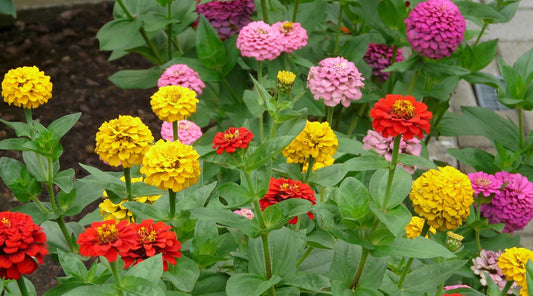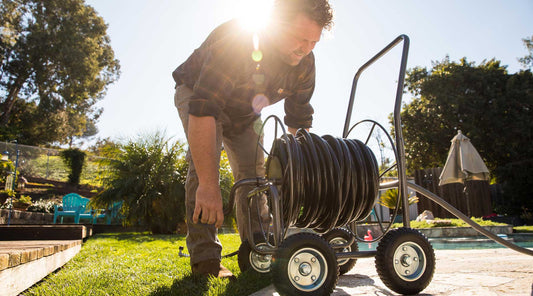It’s now three months into 2021 and we’re all holding out hope that this year is going to be different from 2020, which honestly felt like one long episode of The Twilight Zone. One positive that came out of the global pandemic was that many of you were able to reconnect with the earth and nature in a way that you hadn’t in years. Gardens flourished as homeowners and renters alike had plenty of time on their hands and a deep desire to do something fulfilling. Getting your hands in the soil and nurturing life is one of the best ways to do that, so gardening boomed. For 2021, we expect absolutely nothing less, and we’re here to help make sure that green and brown thumbs alike are successful.
Now that the weather is warming up, and the birds are singing happily, gardeners are starting to think about their spring plans. Juicy tomatoes, fragrant basil, and vibrant flowers dance through our minds as we brave the last stretch of winter. While exciting, it can also seem overwhelming, so we’re here to help you prep your garden for the change in season.
Here is your Yard Butler’s personally curated “To-Do List” for prepping your garden for Spring:
Number One
Clean your tools! Why can’t you just take your tools out of the shed and start digging? It’s because all of the bacteria and fungus from last year's garden could still be lurking on your gear. This can harm your new plants before they even get a chance to grow. Cleaning your tools is also beneficial to preventing rust and keeping them sharp. To clean and disinfect your garden tools, first rise and scrape off any leftover dirt, then one part bleach to ten parts water and let them soak for about ten minutes. Make sure that you rinse them after and get them completely dry to prevent rust from forming. If you have a container garden, the same process goes for your pots from last year.
Number Two
Weeding! Yes, we know this is the most dreadful of all gardening chores, but take advantage of the cooler weather to get this strenuous task done without dripping in sweat. At Yard Butler we have a few tools to make weeding easier, including our Terra Weeder and Rocket Weeder. For those in wetter regions, it’s best to wait until the soil is dry, and not still wet from heavy rainfall or snow. When you weed and work with soil when it’s moist, it is possible that you'll just end up compacting the soil and making it even harder to work with. Also, remember to get your weeds out by the root or all of your work will be for nothing when they reemerge.
Number Three
Till your soil! If you’re planting directly into the earth, or leftover soil from last year, then you’ll want to do some tilling. Over time, soil tends to become compacted from weather conditions and general use. Tilling allows your soil to become loose for planting, and will also take care of some of the deeper weeds that you may have missed in the last step. Tilling is also ideal for mixing the organic matter that naturally exists in soil into the hardened top layer. Also be sure your soil is dry for tilling, similar to the weeding process, and that you get at least 4-8 inches into the soil. For fast and efficient tilling, check out our Twist Tiller or the Rotary Cultivator. Both of these tools make quick work of an otherwise arduous task.
Number Four
Plan your garden! Before you head to the local nursery, scout out your space, get an idea of where your garden gets the best light, and do some research. Feel like growing veggies this year? Find out how much water and light they need, and decide which are best for your space. The same goes for flowers and herbs. The last thing you want to do is spend money at the garden center and then realize that your chosen plants simply won’t grow well in your space. This step will also allow you to count out how many pots you need, or how large of a raised bed you’d like to build.
Number Five
Test your soil! Now that you know which plants you want to grow, you can also figure out exactly what kind of soil they need with the help of Google. Instead of guessing the chemical components and pH of your soil, you can instead purchase a soil test kit. Then, fertilize accordingly to optimize your nutrient levels, either with your own compost or with store bought fertilizers such as Fox Farm. If you’re ever not sure what’s best for your circumstances you can ask your local nursery workers.
With all of these steps completed you are ready to get growing! We hope you have a great season.






